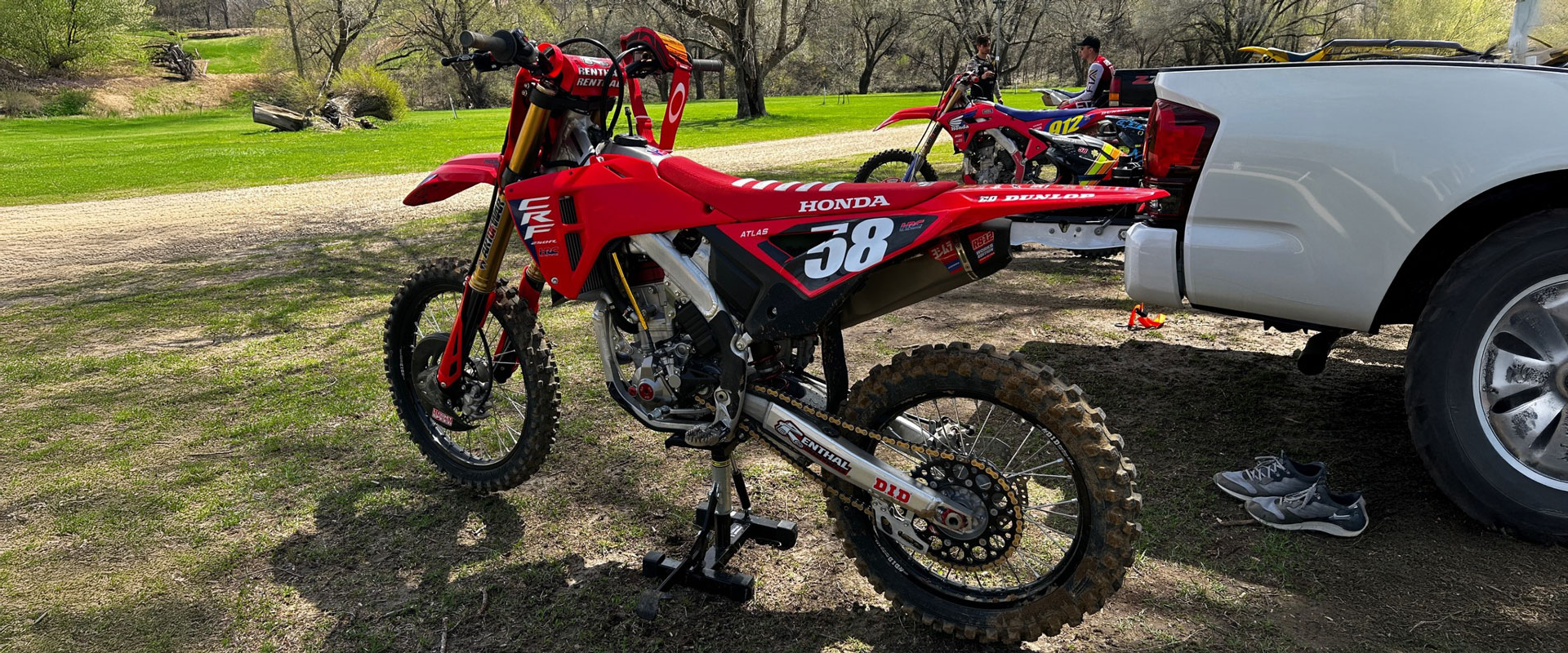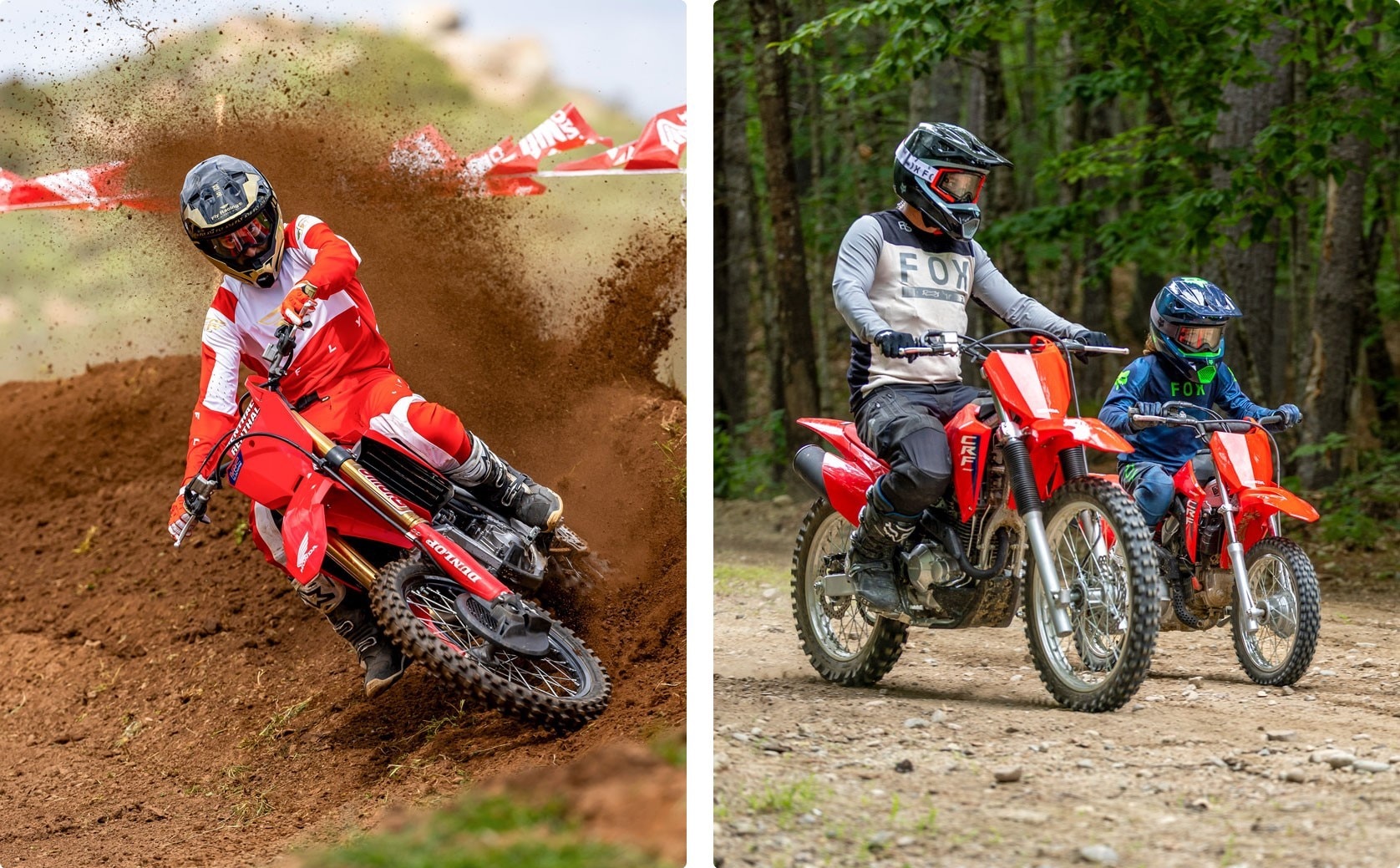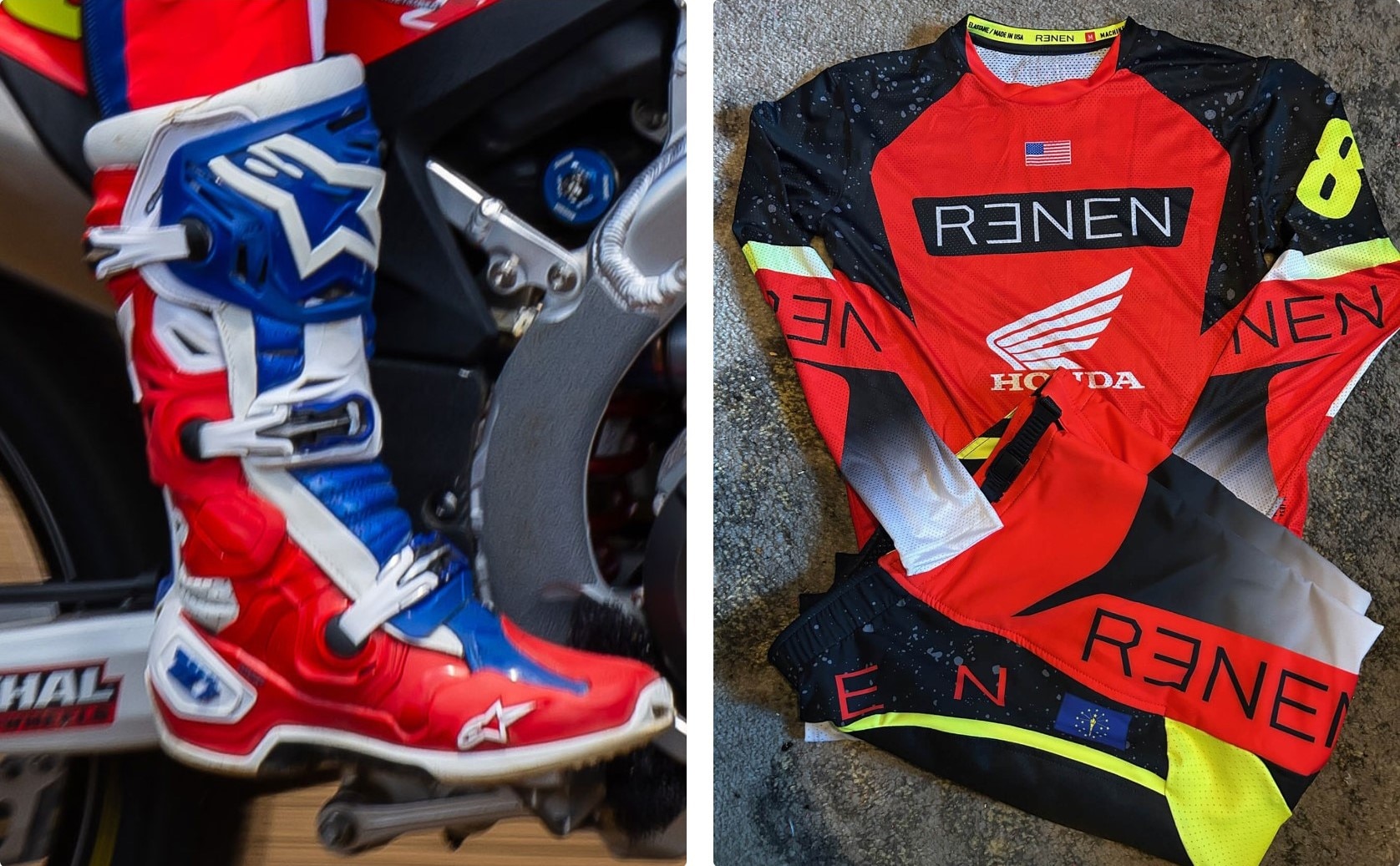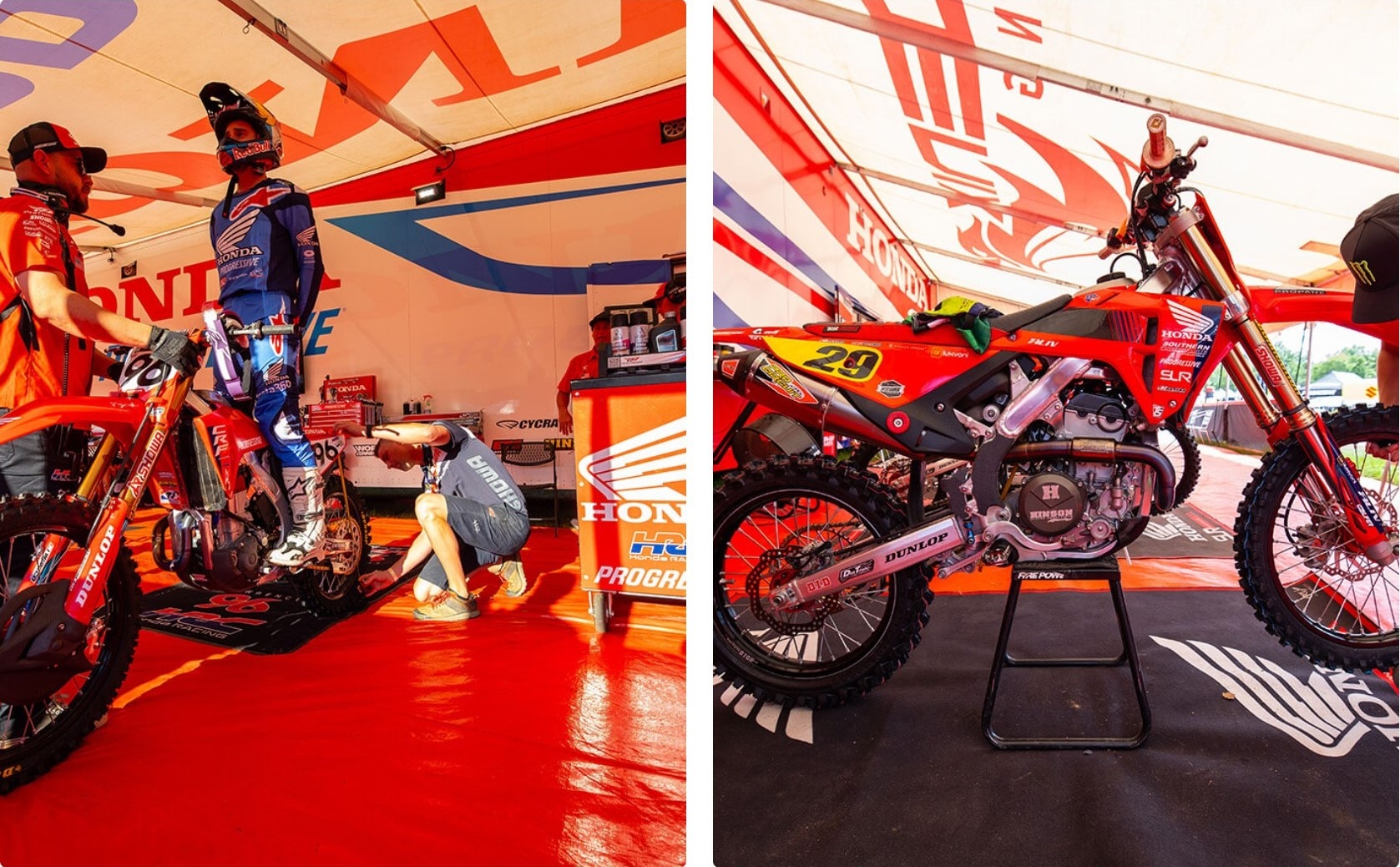Step 4: Set your bike up for success
Before you kick up your first roost, take a few minutes to dial in your machine. A properly set-up bike isn’t just about performance—it’s about safety, confidence, and making sure your first day feels as good as it should. Neglecting these steps can lead to a frustrating ride, or worse, mechanical problems that cut the day short. The good news? Most adjustments take only a few minutes and pay off big in confidence and control.
Tire pressure
Your tires are your only contact with the track, so proper pressure matters. Start with the pressures recommended in your owner’s manual, and check before every ride—conditions can change quickly. Depending on how your bike feels, you can drop 1.0 psi for soft, sandy tracks to increase grip, or add 1.0 psi for hardpack to improve stability.
Pro Tip: Use a dedicated motorcycle tire gauge for accuracy; even a 1 psi difference can affect handling.
Think of this as your bike’s vital signs. Always check fuel, radiator fluid, and engine oil before you hit the track. A well-lubricated, correctly tensioned chain not only extends life but also ensures correct power delivery, while a clean and oiled air filter means maximum horsepower and engine life.
Pro Tip: After every wash or muddy ride, clean and lube the chain to prevent premature wear and rust.
Controls
Comfort equals control. While the bike is on a motocross stand, sit naturally and adjust your handlebars so your arms feel relaxed and straight. Your levers should angle downward in line with your forearms when you’re in a riding position. After a few laps, fine-tune based on how your wrists feel.
Pro Tip: Mark your preferred bar and lever positions with a small line using a marker or paint pen—this saves time if you ever remove them.
Suspension
Your suspension works best when it’s set for your weight. Measure the distance from the rear axle to a marked spot on the fender with the bike on a stand, then again while you’re standing on the pegs in full gear. The difference is your sag—aim for 100–110mm, with 105mm as the sweet spot. If you can’t hit that range, you may need a different spring for your weight. For this, consider consulting a suspension specialist, such as Art of War or Factory Connection.
Pro Tip: Keep a notebook or phone note with your sag setting, track conditions, and adjustments—over time, this becomes your personal suspension playbook.













